Welcome to the WholeFoods salon! I see you’ve already picked out a magazine. Now, just take a seat and relax. We’ve asked product formulators and brand ambassadors in the health and beauty aid (HABA) market to be here, too. They’re excited to tell you about what’s new and noteworthy in a heap of HABA categories.
Problem Hair and How to Fix It
The natural products industry isn’t short on solutions for just about every hair issue, from serious dandruff to curly hair that frizzes or flattens.
For Kelly Foreman, founder and CEO of MopTop Hair, Southlake, TX, the search for solutions to frizzy hair began with a set of qualities in mind. “I was looking for ingredients that would add moisture without leaving a tacky residue, leaving hair without frizz and soft to the touch,” she says. Foreman says she turned to aloe, honey and sea botanicals. The aloe and honey fill the cuticle with the moisture that textured hair needs and the sea botanicals coat the hair.
The goal, she says, is to use water-soluble ingredients that coat the hair but don’t build up, so that users are left with soft, touchable hair. Products also need to stay away from ingredients that can strip or dry out hair, as lack of moisture and friction cause frizz.
Foreman also warns against the overuse of  silicones for people with unruly hair. “Silicones offer a quick, beautiful cosmetic smoothing effect, however, with prolonged use it virtually ‘laminates’ the hair,” she says. This causes hair to lose elasticity and break more easily. The silicones can also puddle around the hair shaft and cause it to grow in thinner and become more fragile. Since silicones are the only ingredient with the thermal properties to handle extreme heat, Foreman says they should be used to protect hair from heat damage by those who use hair tools like a flat iron. But, a clarifying “reset” of silicone build up is needed to keep the scalp and hair healthy.
silicones for people with unruly hair. “Silicones offer a quick, beautiful cosmetic smoothing effect, however, with prolonged use it virtually ‘laminates’ the hair,” she says. This causes hair to lose elasticity and break more easily. The silicones can also puddle around the hair shaft and cause it to grow in thinner and become more fragile. Since silicones are the only ingredient with the thermal properties to handle extreme heat, Foreman says they should be used to protect hair from heat damage by those who use hair tools like a flat iron. But, a clarifying “reset” of silicone build up is needed to keep the scalp and hair healthy.
Beyond aloe and sea kelp, says Janelle Bird, marketing project manager at Mineral Fusion, Denver, CO, there are other ingredients for preventing breakage and restoring moisture: “Natural oils and butters such as argan and shea are effective, too. We’ve had success with these ingredients in our Hair Repair Shampoo and Conditioner which are designed for coarse, dry and damaged hair.”
Quinoa protein is an intriguing ingredient that can bind to the hair shaft, strengthening it and locking in moisture, according to Susan Griffin-Black and Brad Black, co-founders and co-CEOs of EO Products, San Rafael, CA. “Quinoa protein is great for weak or damaged hair. We love the fact that it is plant-based and is not derived from animals, as many proteins traditionally are,” they say.
Abyssinian oil is also included in EO Products’ hair care formulas for its ability to moisturize and prevent breakage. “We believe abyssinian oil will be an up-and-coming, trendy ingredient in skin and hair care,” say Black and Griffin-Black, though they point out it has been used for centuries to add shine to hair.
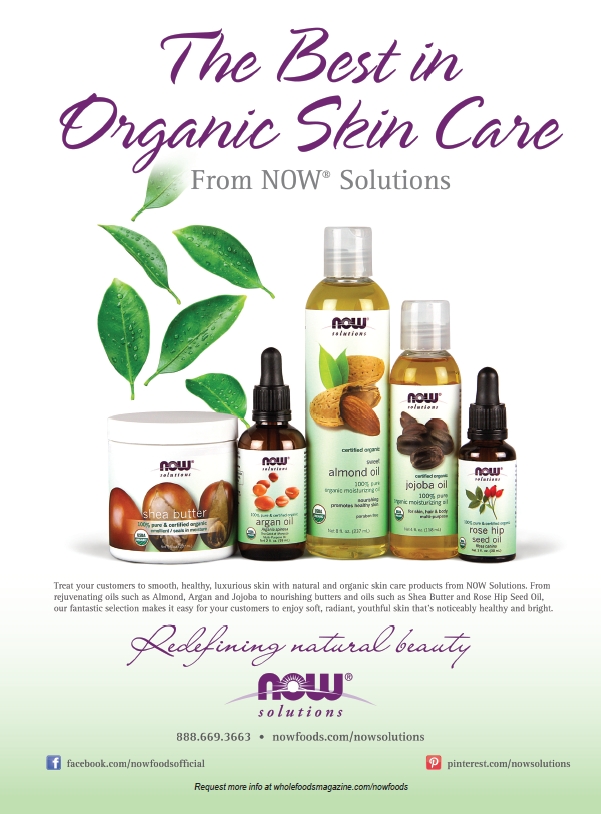 The delivery system is as integral to the results of a hair product as the ingredients themselves, says Amy McKelvey, brand and communications director for Andalou Naturals, Novato, CA. She says her company’s hair care formulas are designed to reach the inner hair matrix to enrich the hair follicle while also improving the condition of the hair shaft. “If the hair shaft is in good condition, then it’s going to look great and be easy to style,” McKelvey says. In addition to a blend of fruit stem cells, she says argan oil is the go-to ingredient in these formulas to moisturize deeply and minimize split ends. McKelvey also says that biotin can help consumers achieve thicker, fuller hair strands and improved manageability, as it infuses the strands with essential protein.
The delivery system is as integral to the results of a hair product as the ingredients themselves, says Amy McKelvey, brand and communications director for Andalou Naturals, Novato, CA. She says her company’s hair care formulas are designed to reach the inner hair matrix to enrich the hair follicle while also improving the condition of the hair shaft. “If the hair shaft is in good condition, then it’s going to look great and be easy to style,” McKelvey says. In addition to a blend of fruit stem cells, she says argan oil is the go-to ingredient in these formulas to moisturize deeply and minimize split ends. McKelvey also says that biotin can help consumers achieve thicker, fuller hair strands and improved manageability, as it infuses the strands with essential protein.
Some formulations are specifically designed for hair types that are especially hard to manage, or for help with transitioning from chemically- or heat-straightened hair back to a naturally curly style. Karyn Trumbach, director of education at Aubrey Organics, Inc., Tampa, FL, says that hair in transition presents special problems. Both curly and relaxed hair are present simultaneously during this transition so a balance must be struck. “Problems with the natural hair closest to the scalp tend to be dryness, frizz and definitely tangling. Then the relaxed hair on the ends is usually brittle, with a dull, compromised cuticle,” Trumbach says. The line where the natural hair and the treated hair meet is the weakest area. “Tangles are the kiss of death to the hair strand because any stress can break the hair off at that line,” she says.
Tangling can be managed with conditioners that include tropical butters like mango, shea and coconut, according to Trumbach. “Because of their high melt point, butters are solid at room temperature and they are more substantive to the hair (or stick better to the hair) than oils that are liquid at room temperature,” she says. Butters can help prevent the friction from hair combing from damaging dry, frizzy, tangled hair. After the butters are applied and the hair dries, the butters help seal in vitamins and moisture, explains Trumbach. “Tropical butters and proteins together can create the perfect moisture and oil balance and can help unify the appearance and texture of the entire hair strand,” she says.
In the context of hair in transition, Trumbach says 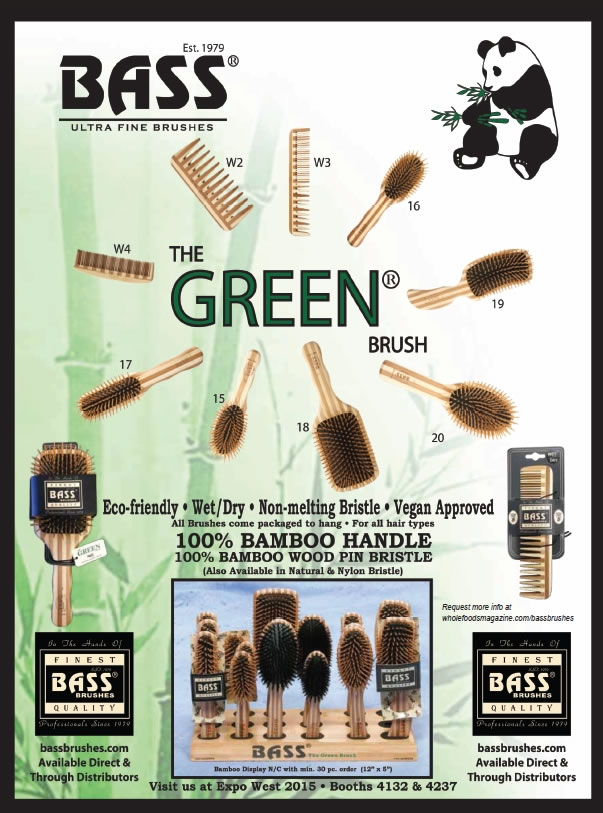 that proteins are needed to strengthen the connection between new growth and treated hair. In addition to quinoa protein, ingredients like keratin and milk protein help counteract brittleness and dullness by attaching to the hair strand and patching over damaged areas, she says. She explains that this occurs due to the similarity between the amino acids in the proteins and the amino acids in hair.
that proteins are needed to strengthen the connection between new growth and treated hair. In addition to quinoa protein, ingredients like keratin and milk protein help counteract brittleness and dullness by attaching to the hair strand and patching over damaged areas, she says. She explains that this occurs due to the similarity between the amino acids in the proteins and the amino acids in hair.
Nobody wants white flakes on their shoulders, and those forced to deal with them are after solutions. “With dandruff affecting almost half the population, scalp treatment products are becoming increasingly popular,” says Linda Miles, D.O.M., co-founder and chief formulator of derma e, Simi Valley, CA.
Therapeutic herbs, botanicals and vitamins can significantly improve the condition of the scalp and hair, Miles explains. “To calm a dandruff-prone, itchy, irritated scalp, look for ingredients like neem, burdock and bearberry,” she says. Neem is a detoxifying herb that has antifungal, antibacterial and antiparasitic properties, she says, while burdock is an antiseptic herb whose roots contain phytochemicals that can help combat some fungi and bacteria. Bearberry is an astringent with antimicrobial properties and a high tannin content.
Other ingredients that can benefit the scalp, per Miles, include tea tree, menthol and salicylic acid. Tea tree features antiseptic, antibacterial and antifungal properties. Menthol helps calm itch for quick relief, and salicylic acid can penetrate and help lift away excess flakes and surface buildup on the scalp.
Be Kind to Your Skin
Skincare formulas that claim not to irritate sensitive skin start off with a major selling point in their favor. Over 50% of women report that they have sensitive skin, according to a study cited by Dorie Greenblatt, director of sales/marketing for Home Health, Ronkonkoma, NY (1).
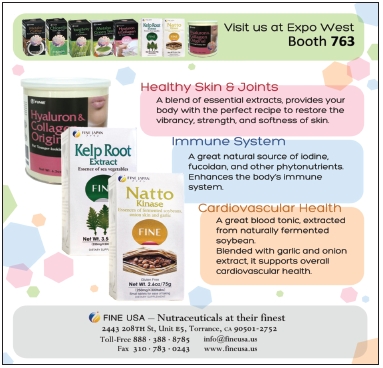 But just what is sensitive skin? Generally speaking, Trumbach says sensitive skin is characterized by easy irritation due to external factors like weather, abrasion and topically applied products. In these individuals, the protective barrier function of the skin gets disrupted more easily. Fragile capillaries are also associated with the symptoms of sensitive skin, she adds.
But just what is sensitive skin? Generally speaking, Trumbach says sensitive skin is characterized by easy irritation due to external factors like weather, abrasion and topically applied products. In these individuals, the protective barrier function of the skin gets disrupted more easily. Fragile capillaries are also associated with the symptoms of sensitive skin, she adds.
Conditions like rosacea and eczema, as well as other inflammatory skin conditions, fall under the sensitive skin umbrella, according to Miles. Sensitive skin has a tendency to be pale, red and fragile, she says, and it can also appear blotchy or flushed. It may freckle quickly when exposed to the sun.
Claims like hypoallergenic and non-comedogenic (won’t clog pores) are more often found on products sold in department stores, on the FDM side of the personal care market, according to Greenblatt. To validate these types of claims for its sensitive skincare line (everclen), she says her company used multiple recognized plant-based ingredients rather than one “hero” ingredient, combined them synergistically to deliver greater benefits, and had the complete product formulas clinically and dermatologically tested.
There are many different kinds of clinical tests that are done before claims such as “safe for sensitive skin” or “hypoallergenic” can be put on a label. The tests are rigorous and sequential, designed to substantiate the safety of products and validate product claims. There are product claims attached to each test, and a product has to pass one test before it can go on to the next test. “Unless testing is done on the exact formulation that a consumer buys off the shelf, there is no way of knowing whether that product will be safe for a sensitive individual,” says Greenblatt. This is because, although individual ingredients may be known to be safe, issues can arise when ingredients are combined, and third-party testing is a way to rule this out.
Bird says her company performs third-party  hypoallergenic testing for its sensitive skin formulas. Black and Griffin-Black of EO Products say their company conducts its product research, development and product testing with its own chemists and R&D team. They say employees test products on themselves, so they are the first to know about any unplanned sensitivities.
hypoallergenic testing for its sensitive skin formulas. Black and Griffin-Black of EO Products say their company conducts its product research, development and product testing with its own chemists and R&D team. They say employees test products on themselves, so they are the first to know about any unplanned sensitivities.
Trumbach advances several core principles for formulating sensitive skincare products: 1) Keep it simple by limiting ingredients, 2) Leave out known irritants and 3) Add proven calming agents.
Jeffrey Light, president of Aroma Naturals, Cerritos, CA, takes an even broader view by posing several key questions that manufacturers must consider: “The planning for an all-natural product begins with its identity: What is the product to be developed? What is the purpose? What will differentiate it from everything else?” Throughout the rest of our discussion, Light will provide some answers to these questions in the context of developing a hand and body lotion for sensitive skin. “With a crème or lotion, our initial target is generally quick hydration that is cooling, soothing and calming with optimal skin feel, while being able to provide total lasting moisture for 24 to 48+ hours,” he says.
So how do companies design products that are non-irritating? One common ingredient Black and Griffin-Black say their line eschews is synthetic fragrance. Bird says the same of her company’s products. “Fragrances have to be carefully considered as they can be composed of dozens of unpublished ingredients, especially synthetic fragrances, and even some natural fragrances can contain strong irritants,” Light says. Trumbach agrees that the number one irritant is usually fragrance. But she emphasizes that some natural essential oils like lavender and lemon actually have a mild scent and also soothe the skin, “so don’t avoid the good stuff,” she says.
Trumbach says other sensitizing ingredients include beta hydroxy acid, retinol and lanolin, along with preservatives like parabens. Greenblatt says that dyes, colors, phthalates, diethanolamine (DEA), sodium lauryl sulfate (SLS), petroleum, mineral oil, formaldehyde and other ingredients are specifically excluded from her company’s sensitive skin line. In addition to avoiding irritants like SLS and laureth  sulfates when it comes to surfactants, Light says that skin toners should ideally be alcohol free. Light also cautions that formulators need to be careful when selecting moisturizers designed for use on the face, as there are many ingredients available and not all are suitable.
sulfates when it comes to surfactants, Light says that skin toners should ideally be alcohol free. Light also cautions that formulators need to be careful when selecting moisturizers designed for use on the face, as there are many ingredients available and not all are suitable.
Miles adds yet another wrinkle that those trying to reduce wrinkles should keep in mind. “Many skincare products, especially anti-aging skincare products, can include aggressive cell-renewing ingredients like glycolic acid that may be too harsh for delicate skin types,” she says.
Any of the aforementioned ingredients can cause irritation, inflammation, an allergic reaction or worse. Some may qualify as ingredients to avoid by all consumers due to the potential harm they can cause.
In establishing the base for a crème or lotion, Light says that ingredients must be chosen from the approximately 21,000 options in the International Nomenclature of Cosmetic Ingredients list. A lot of knowledge must be brought to bear about what these ingredients can contribute, including an understanding of the differences between naturals and synthetics. The emulsifier allows the mixing of oil and water so that a crème or lotion can be formed without separating. “With practically hundreds of emulsifiers to choose from, we’ll only consider those that are gentle and generally recognized as safe,” Light says. He notes that people can learn more about cosmetic ingredients from the Environmental Working Group’s Skin Deep Cosmetics Database at www.ewg.org/skindeep.
Now, on to the long list of natural ingredients that are sensitive-skin friendly. Greenblatt says her company’s skincare line, with options like cleanser, face cream, eye cream, toner and body lotion, contain botanicals such as aloe vera, green tea and lavender; oils from grape seed and jojoba seed, coconut-derived cleansers, vitamin E, beta-glucans and more. Many of these ingredients function as alternatives to the ingredients on the naughty lists above. According to information from Greenblatt, cocomidopropyl betaine (one of the coconut-derived cleansers), functions as a gentle “foaming” ingredient that is a safe alternative to harsh sulfates like SLS.
Once the base of Light’s lotion or crème has taken shape, the chemist and/or dermatologist working on the formula will select the best ingredients for the desired emulsion. First come water-soluble ingredients like soothing aloe vera gel, hydrating coconut water, calming olive leaf extract or a slew of other botanicals.
Then, the oil and butter side of the emulsion is designed. Light says his company uses a patent pending omegas 3, 6, 7 and 9 oil blend to provide long-lasting moisture. “There are hundreds of oils and butters that can be added to this side of the formula for soothing, rich moisture,” he says. Some of these include squalane (from olives), moringa oil, rosehip seed oil, camellia seed oil (a light emollient), sacha inchi (which contains omegas and beta-carotene), shea butter and buriti oil. The formulation process doesn’t end here, says Light, as many active ingredients are commonly added that benefit sensitive skin, like allantoin, alpha bisabolol, panthenol, chamomile and comfrey.
Aloe vera, according to Trumbach, is so 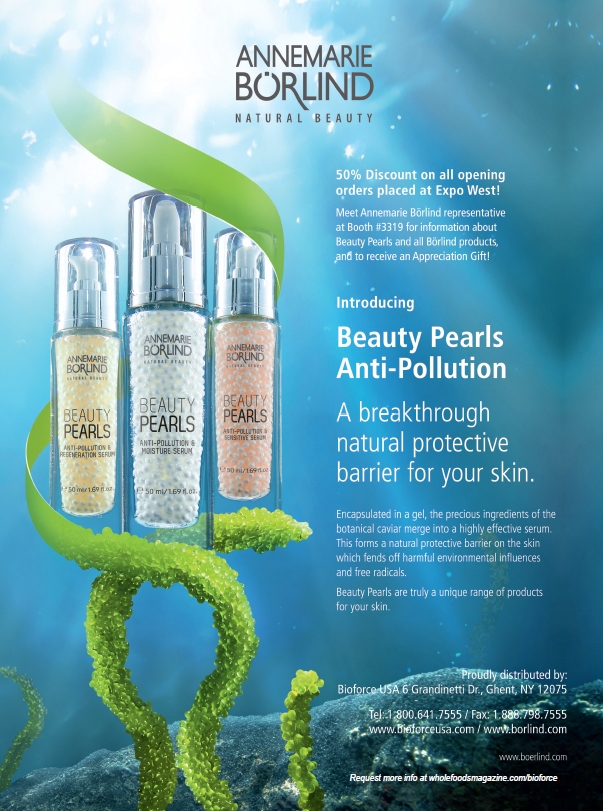 widely used as a base ingredient for its calming benefits, even outside the sensitive skin category, that some people may have lost a sense of its value. Its benefits for nourishing, cooling and hydrating the skin can’t be overstated, she says.
widely used as a base ingredient for its calming benefits, even outside the sensitive skin category, that some people may have lost a sense of its value. Its benefits for nourishing, cooling and hydrating the skin can’t be overstated, she says.
“Formulating for sensitive skin that is easily irritated, dull, dry, flaky, uneven, blotchy and over-exposed requires a comprehensive approach and a true understanding of the many complexities of the delicate, dry and reactive skin type,” says Stacey Kelly Egide, CEO and founder of Andalou Naturals. Egide says her company’s clinically tested 1000 Roses line for sensitive skin is manufactured to ensure pH and electrolyte balance, and contains five active plant-based complexes designed to work at the cellular level.
Egide says the first layer of this formula consists of alpine rose stem cells, which support epidermal regeneration and improve barrier function among other benefits. Next up is the 1000 Roses complex, which contains rosewater, rosehip oil, rose geranium essential oil and rose essential oil to nourish, sooth and protect skin. The Skin Soothing complex features hyaluronic acid, magnolia bark, boswellin extract and date leaf cell extract. Pomegranate oil and pomegranate extract help build collagen and provide antioxidant protection. The last layer contains a proprietary fruit stem cell blend, aloe vera polysaccharides and a BioActive 8 Berry complex. “The beauty of a proper formula is that it transforms sensitive skin into resilient skin,” says Egide.
In addition to moisturizers like aloe and jojoba oil, Miles says sensitive, aging, rosacea-prone skin can benefit from the antioxidant capacity of French maritime pine bark extract (Pycnogenol from Horphag Research). This ingredient has been noted, she says, for both soothing and anti-aging benefits when applied topically. “It works by protecting and stabilizing the capillary system, binding to collagen fibers that line capillary walls,” she says. This helps build skin’s resistance to irritation, improve microcirculation and reduce the puffiness caused by leaky capillaries. It has also been shown to reduce the swelling and redness caused by UV light exposure and chemical irritants, says Miles.
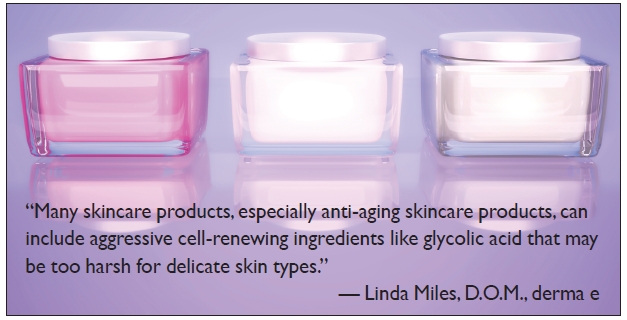 Extracts from “extremophiles” (organisms that thrive in extreme environments) such as snow algae, and ingredients like tsubaki oil, Moroccan lava clay, argan oil, sodium hyaluronate and hyaluronic acid are featured in a skincare line from EO Products, say Black and Griffin-Black. In all, the products contain over 20 essential plant oils suitable for sensitive skin.
Extracts from “extremophiles” (organisms that thrive in extreme environments) such as snow algae, and ingredients like tsubaki oil, Moroccan lava clay, argan oil, sodium hyaluronate and hyaluronic acid are featured in a skincare line from EO Products, say Black and Griffin-Black. In all, the products contain over 20 essential plant oils suitable for sensitive skin.
Nutrient-replenishing mineral water, which promotes proper cell function, is a key sensitive skincare ingredient utilized by Bird’s company. Licorice root also helps soothe sensitive skin, she says.
Sea aster extract has been clinically proven to reduce redness and blotchiness, according to Trumbach. It is a semi-aquatic plant found in waters along the shores of Northern Europe, and is subjected to salt, wind and waves. As a result, it is filled with strengthening nutrients, she explains. The extract can help rebuild the barrier function of the skin by boosting ceramides. She says sea aster extract is also beneficial for those with a fragile capillary network because it can help with microcirculation and provides anti-inflammatory action.
Bar Soap Appeal
Turn on the TV these days, and you’re likely to see a fancy commercial for some trendy body wash before too long. You won’t see any for plain old bar soap. But in the natural products channel, solid soaps that are both beneficial and beautiful (even artisanal) are in demand.
“Most people are initially attracted to natural bar 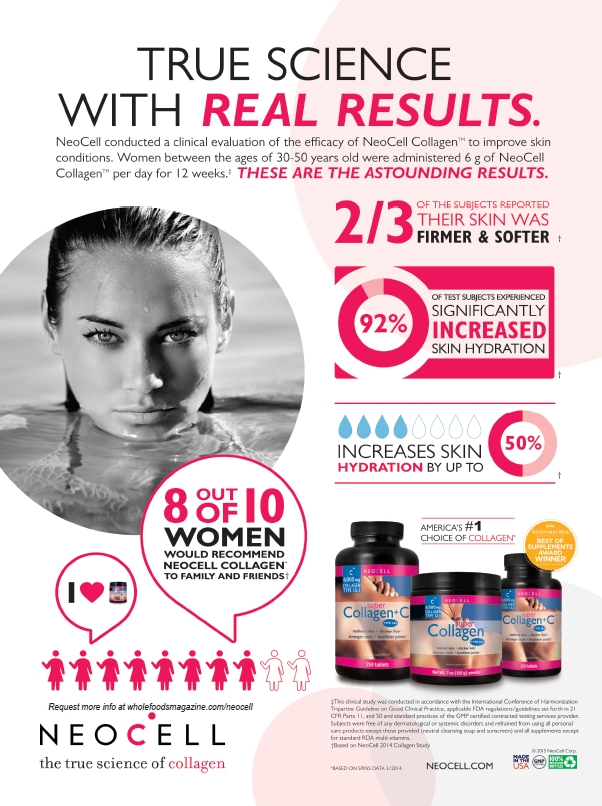 soaps by their enticing aromas and appealing aesthetics. They look good. They smell good. And they make nice little inexpensive gifts,” says Maggie Hanus, soap bartender at A Wild Soap Bar LLC, Austin, TX. Once these same people actually use the soap and experience reductions in skin issues like itching and flaking, she says they quickly become devotees.
soaps by their enticing aromas and appealing aesthetics. They look good. They smell good. And they make nice little inexpensive gifts,” says Maggie Hanus, soap bartender at A Wild Soap Bar LLC, Austin, TX. Once these same people actually use the soap and experience reductions in skin issues like itching and flaking, she says they quickly become devotees.
Muneaki Takahata, Ph.D., microbiologist and colleague of Iichiroh Ohhira, Ph.D., creator of Dr. Ohhira’s Probiotics, distributed by Essential Formulas, Irving, TX, describes his company’s Probiotic Kampuku Beauty Bar (more on probiotics in skin care later).“Special attention was paid to selecting the soap base and ingredients as well as the manufacturing method,” Takahata says. No fragrances or artificial colors are added, and fermented vegetable extract helps leave the skin healthy and moisturized. The bar is made in a traditional way that requires a lot of time and effort, he explains.
Natural bar soaps are typically created with the slow “cold process,” according to Hanus. This means no external heat is used, except briefly to melt the solid fats or oils. When the soap maker mixes animal fats or vegetable oils (used by most natural soap makers today) with sodium hydroxide (also known as lye), a reaction called saponification occurs.
A basic recipe is roughly 70% vegetable oils and 30% lye solution (water and sodium hydroxide), according to Trumbach. Lye has a reputation for being harsh on skin in its natural state, she says.
But don’t freak out, Hanus says. While real solid soap is made with lye (detergent soap is not), if it’s made properly, no lye is left in the final bar of soap, she says. “Well-made natural bar soaps are extremely gentle and retain all of their moisturizing glycerin, which commercial soap makers remove,” Hanus adds. Large operations remove glycerin because it clogs up milling machines, and they sell the glycerin back to consumers in the form of costly lotion, after harsh detergent bars have dried out their skin. “See how that works?” she says.
 Good natural bar soaps should have organic base oils at the top of the ingredient list, such as extra-virgin olive oil (for moisturizing), coconut oil (for a big lather effect), castor oil (for extra creaminess), sustainable palm oil or sunflower oil, according to Hanus. She says the oils chosen and the way they are blended have a major impact on quality.
Good natural bar soaps should have organic base oils at the top of the ingredient list, such as extra-virgin olive oil (for moisturizing), coconut oil (for a big lather effect), castor oil (for extra creaminess), sustainable palm oil or sunflower oil, according to Hanus. She says the oils chosen and the way they are blended have a major impact on quality.
“Any vegetable oils can be utilized, but the most common soap oil is coconut because it creates abundant lather, even in hard water,” says Trumbach. Formulations that use specialty oils like rose hip (rosa mosqueta) seed oil or sea buckthorn oil can create “amazing skin soothing benefits while you cleanse,” she says. The sustainability and biodegradability of the ingredients in natural bar soap give it a leg up over many conventional bodywashes, Trumbach feels. Vegetable oils are readily available and undergo minimal processing, and sodium hydroxide is easily obtained from salt water.
Adding organic herbs and spices can lend soap attractive textures and colors, says Hanus, while natural clays can draw out impurities and impart a nice “slip” to bar soap.
It’s true that natural bar soap may run consumers a bit more at retail, Hanus says. But they’re given careful attention by skilled artisans working with real, food-grade ingredients, and without antibacterial triclosan, EDTA and other harmful and unnecessary ingredients found in many commercial soaps, she explains, stating, “When you choose natural bar soaps, you can feel good about what you’re not washing down the drain while nurturing and pampering your skin.”
The Best in Natural Oral Care
Making sure the mouth stays healthy serves many purposes, some of which are relevant in the personal care category. After all, healthy teeth and gums go hand in hand with attractive, white teeth and pleasant breath.
Habits that promote strong teeth, help maintain proper pH (reduced acidity), minimize inflammation and maintain healthy flora (beneficial bacteria) all factor into the health of the oral cavity, according to researcher and dentist John Peldyak, D.M.D., speaking on behalf of Xlear Inc., Orem, UT. One important natural ingredient that consumers can turn to is xylitol, Peldyak believes.
Xylitol, a natural plant-derived sweetener, helps support all of the goals mentioned above, he says. Xylitol does not break down in the way sugar does, and can help keep a neutral pH in the mouth while also preventing bacteria from sticking to the teeth. “This is how it protects the teeth from tooth decay. With the dental benefits of xylitol, the acid attack that would otherwise last for over half an hour is stopped,” 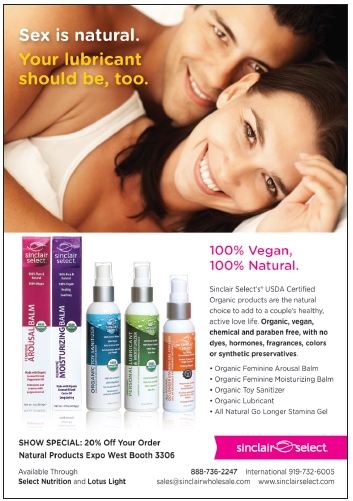 Peldyak says. The anti-adhesion effect of xylitol on bacteria leads to reduced plaque. Cavity-causing bacteria in the mouth are also unable to digest xylitol, so their growth can be greatly reduced. Peldyak says their number may fall in the presence of xylitol by as much as 90%.
Peldyak says. The anti-adhesion effect of xylitol on bacteria leads to reduced plaque. Cavity-causing bacteria in the mouth are also unable to digest xylitol, so their growth can be greatly reduced. Peldyak says their number may fall in the presence of xylitol by as much as 90%.
Other natural products can complement xylitol in supporting dental health, Peldyak says. For anti-adhesion benefits, he suggests cocoa and green tea, as well as certain botanical compounds found in fresh fruits and vegetables. For supporting fresh breath, he suggests mint, parsley, cinnamon, rosemary and anise.
Silver is another up-and-coming ingredient in natural oral health products. An article on oral health by Sherrill Sellman, N.D., describes the role a patented nano-silver ingredient (SilverSol from American Biotech Labs) can play in toothpaste. She writes that a tooth gel using this ingredient, along with xylitol and peppermint oil, can help promote healthy teeth and gums.
Sellman notes that Hippocrates, the “father of medicine,” wrote in his medical texts that silver has healing and anti-disease properties. She explains that traditional colloidal silver products work through chemical action and require direct contact to be effective. This nano-silver ingredient works through catalytic action, which means the particles of the ingredient can work continuously without being neutralized, making it more efficient.
Sellman adds that peppermint oil can help eliminate bad breath and help teeth and gums combat hazardous germs. “Oral health is a powerful predictor of your overall health,” Sellman writes. “Maintaining optimal oral health will not only give you a brighter, healthier smile, but also may help you fend off many potentially deadly diseases.”
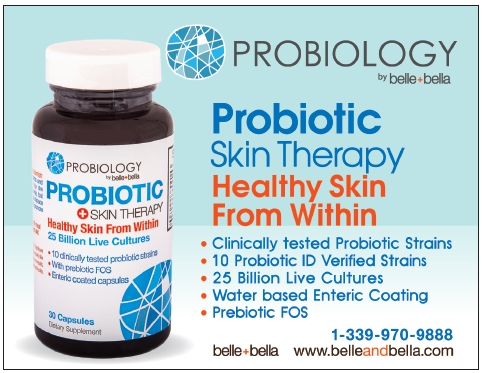 Cranberry is another oral health ingredient with benefits and mechanisms of action similar to that of xylitol. According to an article by Philip Domenico, Ph.D., shared with us by Fruit d’Or, cranberry’s ability to keep bacteria from sticking to surfaces is behind its benefits.
Cranberry is another oral health ingredient with benefits and mechanisms of action similar to that of xylitol. According to an article by Philip Domenico, Ph.D., shared with us by Fruit d’Or, cranberry’s ability to keep bacteria from sticking to surfaces is behind its benefits.
When bacteria latch on, they form communities held together by a slimy substance called biofilm. Domenico writes that both dental plaque and gingivitis involve biofilms, and that the red pigments in cranberries, called proanthocyanidins (PACs), have been shown to inhibit biofilm formation. Cranberry PACs can, in this way, help prevent the destruction of connective tissue in the gums and reduce tooth decay.
These are but a handful of the dozens of natural ingredients that can improve the oral health of consumers. Many of these were discussed in our December 2014 article, “A Natural Smile.”
Purity through Probiotics
Having bugs crawling all over one’s skin is not a pleasant thought. But like it or not, microscopic bacteria are doing just that. The good bugs can benefit the skin, and the idea of applying probiotics topically is gaining steam in personal care. Probiotics can be taken orally, too, and when the right strains are used, it is thought to help purify skin from the inside, out.
“Most consumers are under the impression that probiotics are only beneficial for digestive health or immune health, but more and more emerging science is showing the benefits of probiotics for our skin,” says Alan Cheung, bacteria advocate and executive manager at Belle and Bella LLC, Lexington, MA. Most blemishes, he says, start beneath the skin weeks before they appear on the surface, and are caused by the overgrowth of toxin-secreting bacteria and yeasts in the gut. Our modern processed food diets, stress and overuse of antibiotics may all be to blame, Cheung says, but probiotics can help.
“ Probiotics nourish and support an individuals’ own beneficial bacteria on the skin while protecting it from harmful bacteria and restoring and maintaining a healthy pH balance,” Takahata says. While “living” lactic acid bacteria (LAB) are not actually present in his company’s skincare product line, a variety of plants, mushrooms, fruits and vegetables are fermented for three years using strains of LAB, and the resulting “fermented extract” is used in the final product. The extract contains other probiotics, prebiotics, organic acids, bacteriocins, enzymes and vitamin, mineral and amino acid byproducts.
Probiotics nourish and support an individuals’ own beneficial bacteria on the skin while protecting it from harmful bacteria and restoring and maintaining a healthy pH balance,” Takahata says. While “living” lactic acid bacteria (LAB) are not actually present in his company’s skincare product line, a variety of plants, mushrooms, fruits and vegetables are fermented for three years using strains of LAB, and the resulting “fermented extract” is used in the final product. The extract contains other probiotics, prebiotics, organic acids, bacteriocins, enzymes and vitamin, mineral and amino acid byproducts.
The living LAB dies off when the extract is being blended with other natural ingredients and heat must be applied, Takahata explains. However, research has established that dead LAB carcasses are beneficial to human skin. They stimulate the skin’s immune activity, while the fermented extract works as a moisturizer.
Takahata says the two most important factors in obtaining healthy skin have nothing to do with its ability to absorb a topical product. The first key is eating a balanced diet, and the second is securing the skin’s surface barrier function by maintaining a proper balance of skin bacteria, which provide a protective film for the skin that protects against “bad” external bacteria and chemicals from the environment. Instead of stripping the skin of this barrier, Takahata says Dr. Ohhira’s skincare enables skin to create its own defense and balance.
Another topical product from Probiotic Action uses spore-forming probiotics. Inside the bacterial cell is a hardened spore that protects the cell’s genetic material from the heat and pressure of the manufacturing process and keeps it from degrading on the shelf. This makes the probiotics viable and stable. When applied, they attach to the wet skin surface and begin to germinate.
Cheung says his company believes in taking the internal route (i.e., taking probiotics as supplements to help address skin issues at their source in the gut). He says his company’s product, called Probiology Skin Therapy, is formulated to help minimize blemish-causing bacteria and yeasts. Two probiotic strains used in the formula, Lactobacillus rhamnosus R0011 and Lactobacillus helveticus R0052, have been clinically studied and shown effective in cases of dermatitis.
|
Hold It!
Most of the plays in the hair styling playbook unfortunately aren’t all natural. According to Karyn Trumbach, director of education at Aubrey Organics, Inc., styling aids like hairsprays, gels and mousse typically use synthetic polymers such as PVP to create hold. A “plastic” coating is created on the hair strand that locks out humidity, smooths the cuticle and increases the thickness of the hair strand. “The reality is natural ingredients are limited in their ability to achieve a firm styling hold,” says Janelle Bird, marketing project manager at Mineral Fusion. Having said this, she notes that butters and oils can help promote a healthy, manageble look and add texture to all hair types. She says her company’s Curl Care Beauty Balm utilizes sunflower, jojoba and mura mura to reduce fly-aways, detangle strands and lend hair bounce. “Plant-derived gums are wonderful styling aids for soft to medium hold and ideal for preventing frizzies and flyaways,” says Amy McKelvey, brand and communications director for Andalou Naturals. Organic, naturally derived gums contain dietary fiber that protects and detangles hair, she says, and her company’s moisture-rich Argan and Sweet Orange Styling Cream (which contains guar gum) is an example of such a solution. McKelvey says the company frequently receives inquiries about its benefits, which include the ability to smooth, control static, repair damage, improve texture and add shine. Another natural fixative ingredient is quinoa protein, Trumbach says. It can help solve splits and frizz while volumizing and conditioning the hair. It is effective because it contains the amino acids cysteine and cystine, which are the primary structural amino acids in hair, according to Trumbach. They absorb and bond with hair to create volume and shine, and leave a coating that resists environmental moisture. |
“The health benefits of probiotics are strain specific, meaning our Lactobacillus rhamnosus R0011 will have different benefits than another Lactobacillus rhamnosus,” Cheung says. He also points out that topical products have limited coverage and can be washed away by environmental factors. In addition, it is difficult to quantify the concentration of probiotic strains in topical products.
Kombucha cultures can also be used to inhibit growth of undesirable bacteria on skin, and this is the method McKelvey’s company employs. She says that imbalances in the skin’s bacteria can result in a number of issues, from acne and rosacea to accelerated aging. Probiotics can help skin retain moisture, soothe inflammation, lessen redness and acne and stimulate collagen production, according to McKelvey. She says her company’s Kombucha gel and exfoliating peel can help improve skin tone and texture.
The Collagen Impact
Collagen is of fundamental importance to the health of the skin, and like probiotics, products containing or supporting collagen can have an impact both topically and internally.
There are several forms of collagen, and finding the right collagen product for their needs is something consumers must consider. Gary Grey, president of Beautiful Nutrition, explains that type-1 collagen is an important component of skin, nails and hair, while type-2 collagen is more specific to joint cartilage. There is also type-3 collagen, but for all intents and purposes it is similar in function to type 1, according to Shannon Hirtzel, marketing manager for NeoCell, Irvine, CA. Both types 1 and 3 are found in other bodily tissues besides skin, including ligaments, tendons and bones. They are produced by “worker cells” called fibroblasts and osteoblasts. “Type 2 is only found in cartilage and is produced by worker cells in the body called chondrocytes,” says Hirtzel.
Hydrolyzed collagen is a more bio-available form of collagen, and Hirtzel says her company uses a hydrolyzation process to break collagen down into smaller amino acid peptides. She says collagen is too large a molecule to effectively penetrate the skin, meaning topical collagen won’t stimulate collagen production on a cellular level the way supplements can. “Research has shown that collagen peptides are particularly beneficial for skin, and can be used in lower doses than is typically the case for collagen,” Grey says.
When applied topically, Grey says that collagen can offer a temporary cosmetic benefit. Hirtzel agrees, saying that topical collagen can help to moisturize skin. “Supplementing with collagen can actually have lasting benefits on the structure and function of the skin—in some cases helping to reduce fine lines and wrinkles and improving moisture retention,” says Grey.
Collagen is produced by the body naturally, says Hirtzel, and strands of collagen fibers are spun together to produce tissues. Skin consists of 75% collagen, and collagen accounts for almost all of the structure of ligaments and tendons. After about age 25, collagen production starts to decline by about 1.5% per year, she says, which leads to visible signs of aging. “The trick is to increase the body’s natural collagen production back up to its youthful level so it will rebuild and strengthen the skin, hair, nails, muscles, bones and joints. Creams and injections don’t ‘turn on the collagen light switch’ in the same way that internal supplements do,” she says. Instead, special types of amino acids that are used to build collagen proteins can trigger collagen production when taken orally.
Research into collagen’s benefits used to be scarce, Hirtzel says, but over the decades it has become more advanced. Its anti-aging benefits are now being investigated using sophisticated machinery that measures its impact on skin qualities like suppleness, hydration, elasticity and wrinkle reduction. She says her company is excited to add to the body of research with its own recently conducted human clinical study.
Since collagen has been extensively researched over the past few decades, new studies mostly serve to add credence to previous research, according to Grey. One recent study found improvements in the elasticity of elderly women’s skin when they supplemented with collagen peptides (2). WF
See www.wholefoodsmagazine.com/hbc for more HABA coverage.
References
1. M.A. Farage, A. Katsaro and H.I. Maibach, “Sensory, Clinical and Physiological Factors in Sensitive Skin: A Review,” Contact Dermatitis 55 (1), 1–14 (2006).
2. E. Proksch, et al., “Oral Supplementation of Specific Collagen Peptides has Beneficial Effects on Human Skin Physiology: A Double-Blind, Placebo-Controlled Study,” Skin Pharmacol. Physiol. 27 (1), 47–55 (2014).
Published in WholeFoods Magazine, March 2015










